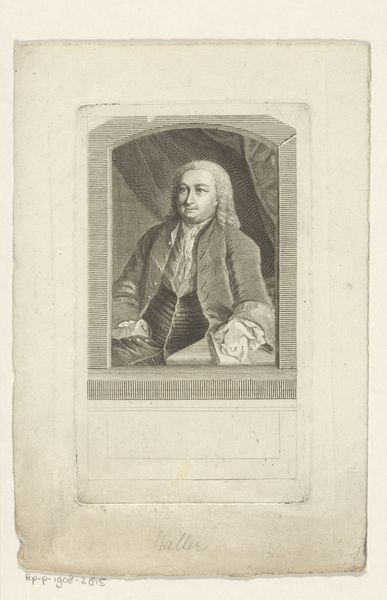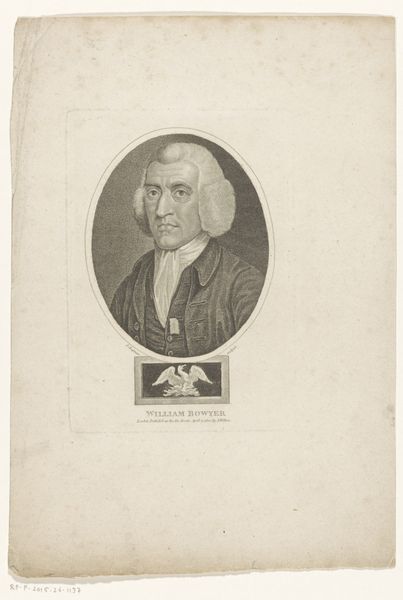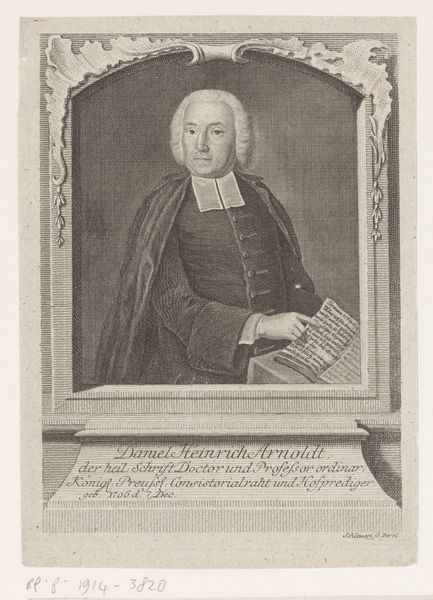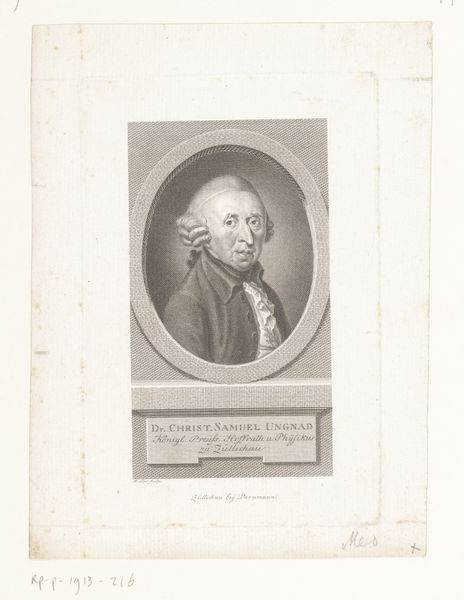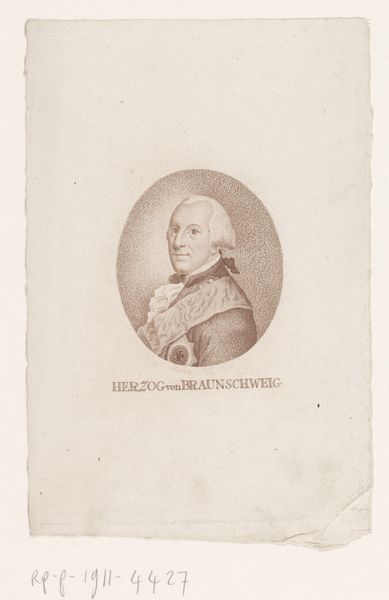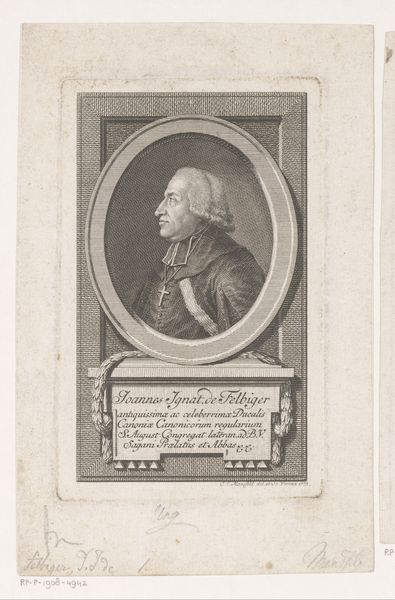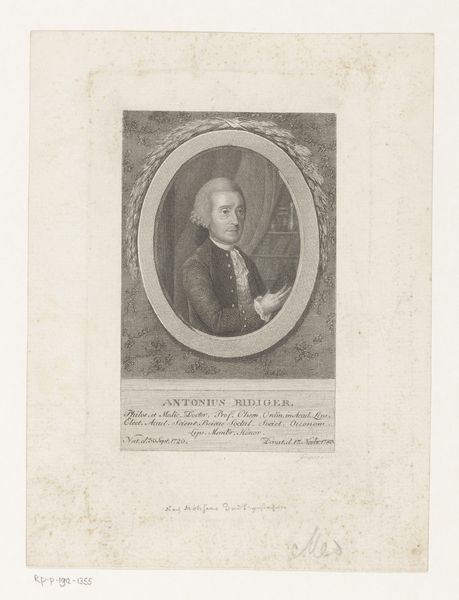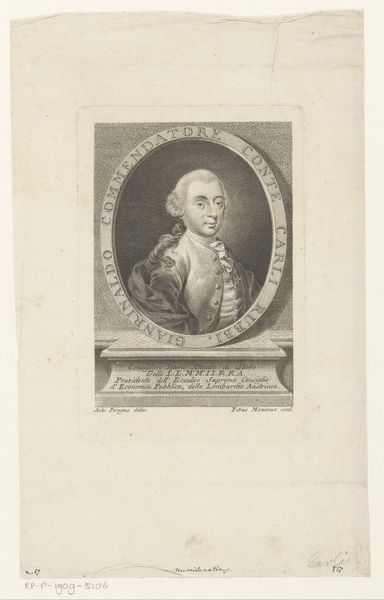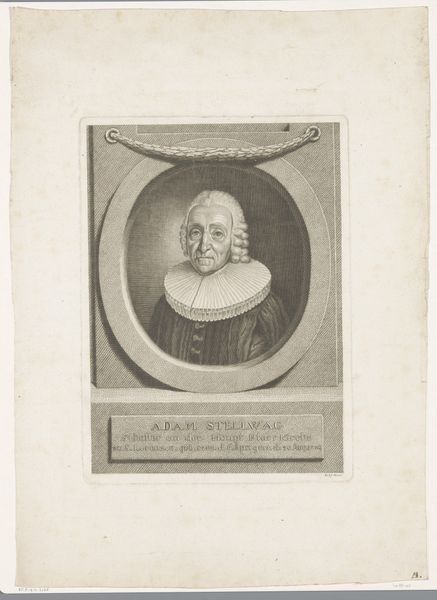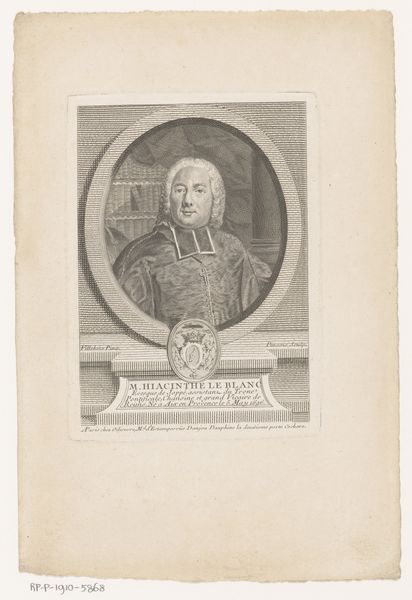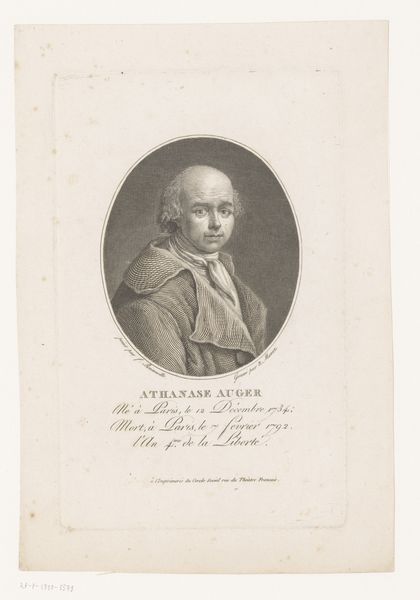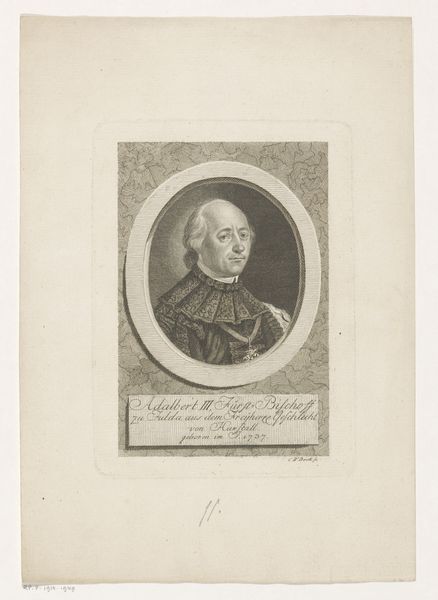
drawing, print, graphite, engraving
#
portrait
#
pencil drawn
#
drawing
#
neoclacissism
#
light pencil work
# print
#
pencil sketch
#
old engraving style
#
pencil drawing
#
limited contrast and shading
#
graphite
#
pencil work
#
history-painting
#
tonal art
#
repetition of white colour
#
remaining negative space
#
engraving
Dimensions: height 162 mm, width 110 mm
Copyright: Rijks Museum: Open Domain
Curator: This is Claude Marie François Dien's "Portret van Louis-Philippe, graaf van Ségur," likely made between 1797 and 1865. It's currently held here at the Rijksmuseum. A neoclassical engraving, would you agree? Editor: My first impression is that it has a rather formal, almost stoic presence. The monochromatic palette really lends it that austere, classical feel. What stands out to you initially? Curator: The framing devices speak volumes. The lions—guardian figures, symbols of strength and authority—flanking the Count's name suggest a powerful lineage and status, framing and enhancing Louis-Philippe's image. The two cameos within the oval echo Roman imperial portraiture, further associating Ségur with classical virtues and the weight of history. It’s visual storytelling. Editor: Indeed. Placing Ségur within that historical lineage serves a purpose. Consider the timing – the revolutionary fervor still fresh. Positioning him within the perceived stability of a classical past provides legitimacy, especially for a figure navigating those turbulent times. A clear attempt to shape public perception. Curator: And the Count’s gaze… It's unwavering, isn't it? Perhaps intending to convey resolute character. It mirrors, interestingly, the symbolic weight given to direction and intentionality of eyes in portraiture from antiquity. He embodies authority as someone who understands and embraces visual propaganda. Editor: To me, there’s a subtle vulnerability, too, despite the noble frame. Maybe it's the softer pencil work suggesting that despite attempts to frame him as an unwavering, powerful figure, there are indeed subtle human vulnerabilities there that remain despite these obvious framing efforts. Curator: It shows, I think, how art, in that socio-political landscape, walks a line between presentation and revelation, especially with figures under such intense public scrutiny. Thank you. It does give us pause about images of leaders that may endure. Editor: Certainly, a stark visual reminder that the past is never simply past, and always carefully, deliberately presented for us to examine and assess today.
Comments
No comments
Be the first to comment and join the conversation on the ultimate creative platform.
